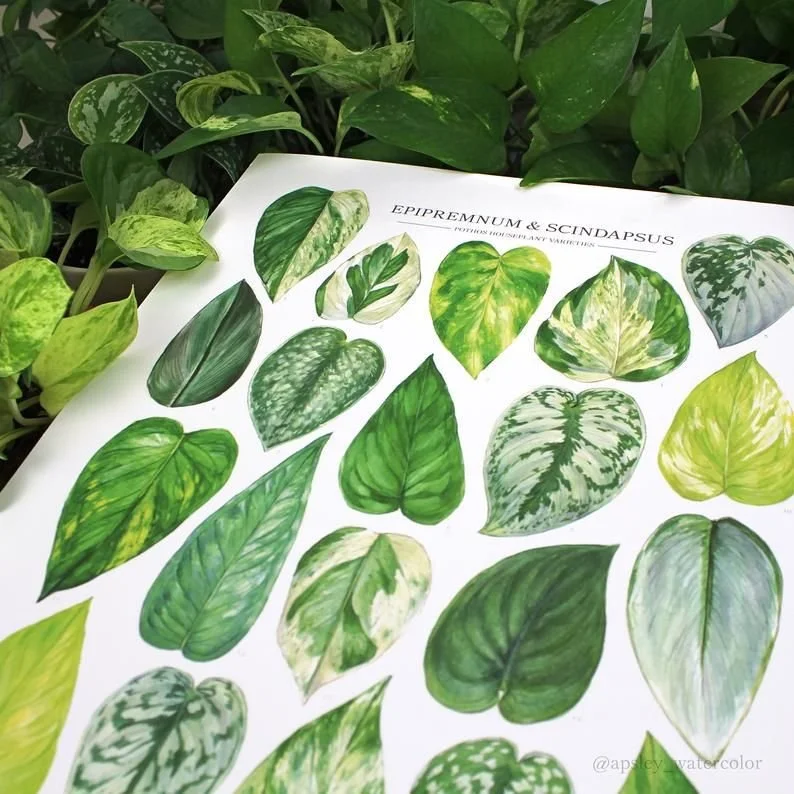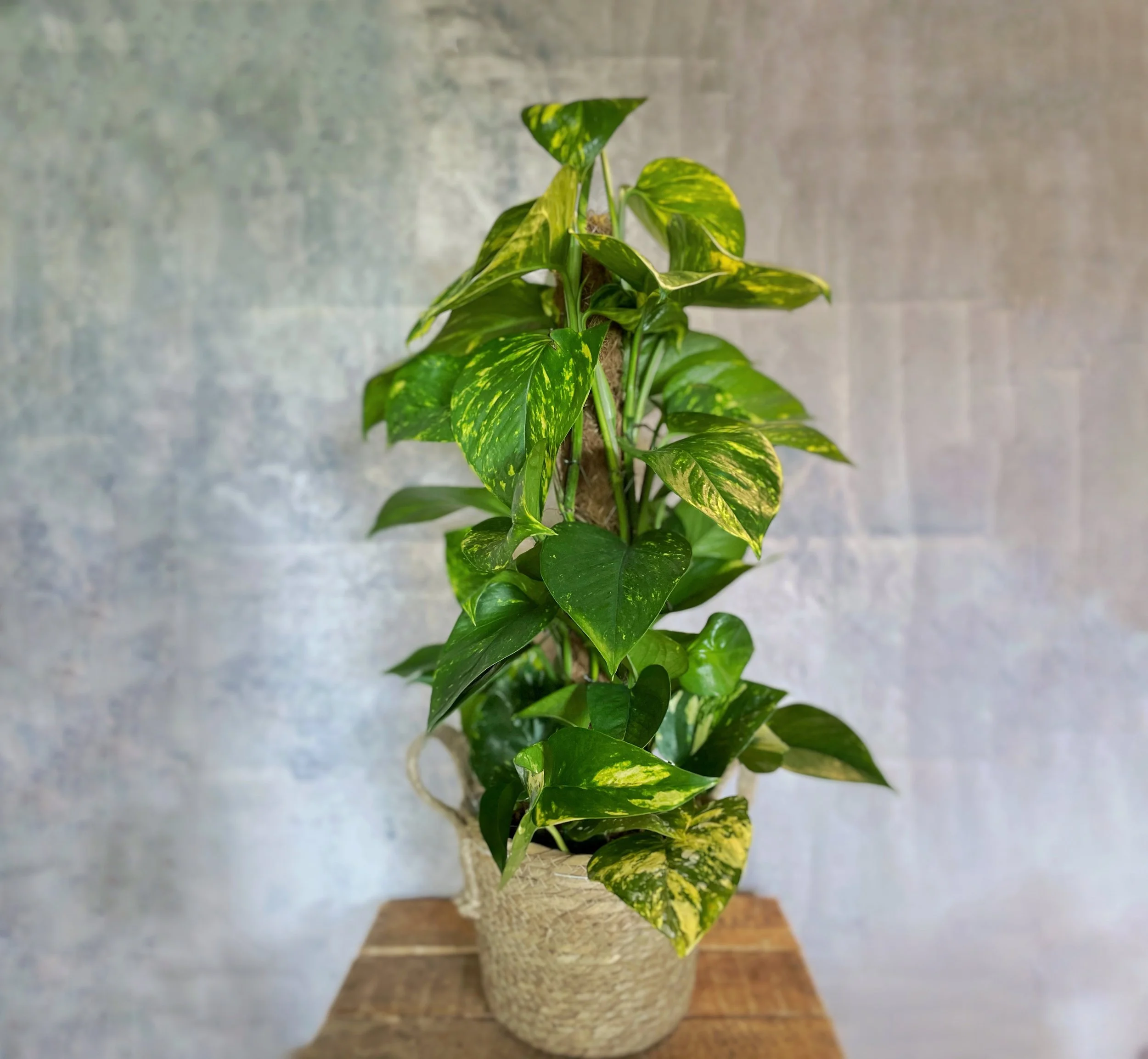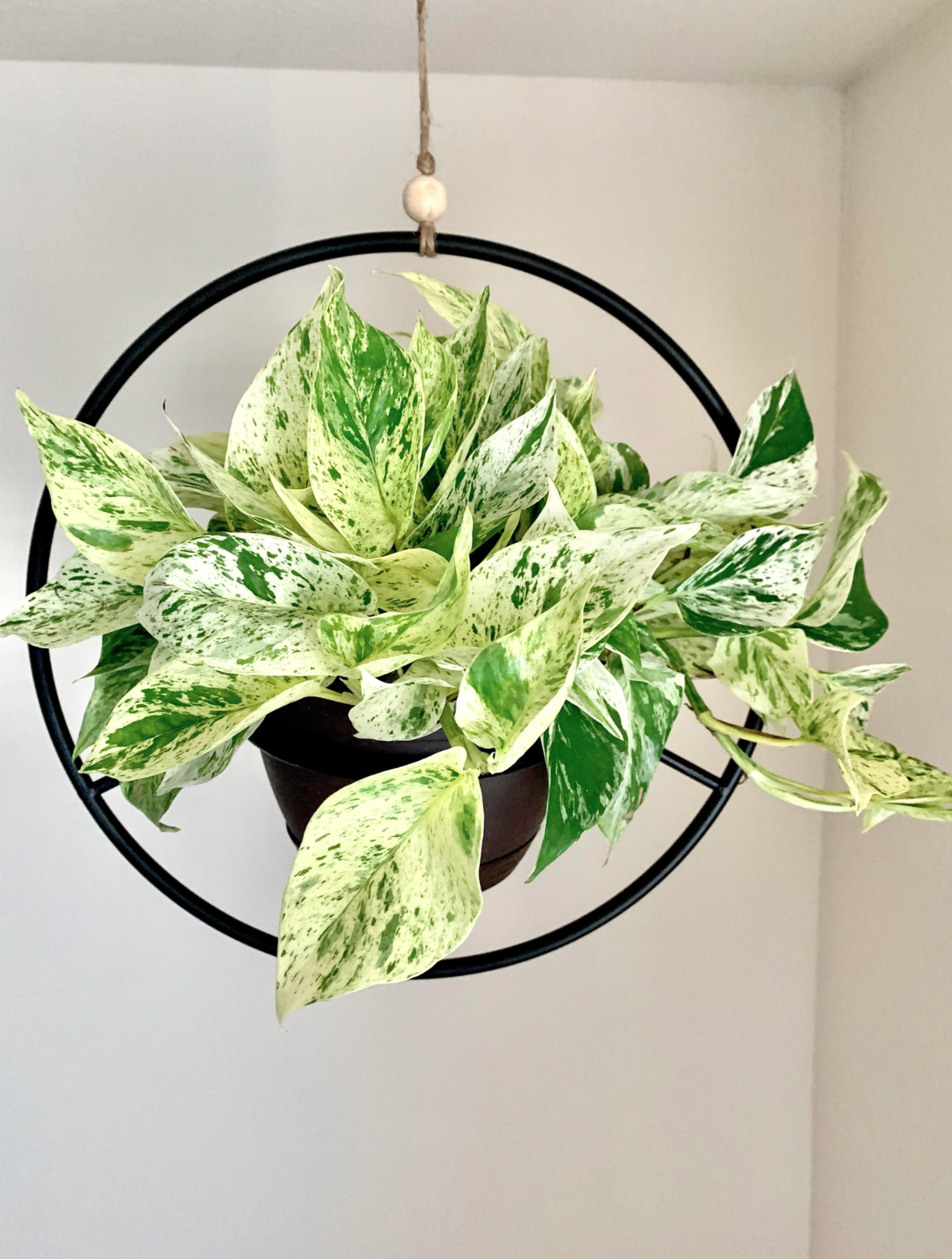The Devil's Indoor House Plants: All About Pothos Hanging Around
The Plant Doctor is a big nerd who loves sharing the art of indoor plant care. Greenery is not only beautiful, but extremely good for our health and wellbeing. These blog posts are passionately written to help people learn more about plants.
If the blog below inspires you to learn even more, you can choose the way you like most: you can read more indoor plant blogs (click here), join a public workshop (click here), have your own private workshop (click here) or watch online videos (click here).
Now let’s get started!
When it comes to indoor house plants, few can rival the charm and versatility of the pothos (Epipremnum aureum). With its lush green foliage, low-maintenance care, and air-purifying qualities, pothos has become a favorite among both seasoned plant enthusiasts and beginners. In this blog post, we'll delve into the world of pothos indoor house plants, exploring their characteristics, care tips, and the numerous reasons why they have earned a well-deserved spot in the hearts and homes of plant lovers worldwide.
1. Introduction to Pothos
Pothos, also known as Devil's Ivy, is a tropical vining plant that belongs to the Araceae family. Its native range includes regions of the Solomon Islands, Southeast Asia, and the western Pacific. The plant features heart-shaped leaves that come in various shades of green, with some varieties displaying splashes of yellow, white, or silver.
Just a small sample of the different pothos varieties!
2. Pothos Varieties
Pothos boasts a range of captivating varieties, each with its distinct leaf color and pattern. Some popular ones include:
Golden Pothos (Epipremnum aureum)
Golden Pothos (Epipremnum aureum)
Known for its vibrant green leaves adorned with golden-yellow splashes and marbling.
Marble Queen Pothos
Marble Queen Pothos (Epipremnum aureum 'Marble Queen')
Characterized by its green and white marbled foliage, creating an eye-catching display.
Neon Pothos (Epipremnum aureum 'Neon'
Neon Pothos (Epipremnum aureum 'Neon')
Showcases electric neon-green leaves that add a pop of color to any room.
Jade Pothos (Epipremnum aureum 'Jade')
Jade Pothos (Epipremnum aureum 'Jade')
Distinguished by its rich, dark green leaves, making it a classic choice.
3. Easy Care and Low Maintenance
Pothos has earned its reputation as a "forgiving" plant, making it an excellent choice for those new to indoor gardening. Its adaptability allows it to thrive in various conditions, making it a versatile addition to any home. Pothos is forgiving of occasional neglect and can tolerate low light levels, although it will perform best in bright, indirect light. It can also endure periods of drought, though it's essential to keep the soil evenly moist to encourage optimal growth.
4. Care Tips for Pothos
Light: Place pothos in bright, indirect light, but it can tolerate low light conditions as well.
Watering: Allow the top inch or two of the soil to dry out before watering. Overwatering can lead to root rot.
Humidity: Pothos can thrive in normal household humidity levels but appreciates higher humidity.
Temperature: Pothos prefers temperatures between 65°F to 85°F (18°C to 29°C).
Pruning: Regularly trim back leggy or overgrown stems to maintain a bushy and compact appearance.
Propagation: Pothos can be easily propagated through stem cuttings in water or soil.
5. Air Purifying Qualities
Apart from their aesthetic appeal, pothos plants have air-purifying qualities, making them excellent additions to indoor spaces. They have been found to filter harmful toxins such as formaldehyde, benzene, and xylene from the air, contributing to a healthier and more pleasant living environment.
6. Versatile Decor Options
Pothos' vining nature allows them to trail gracefully from hanging baskets or climb up trellises, adding a touch of green elegance to any room. They also make beautiful table centerpieces when grown in decorative pots or glass vases. Their ability to adapt to different light conditions and their attractive foliage make them suitable for various indoor settings, from well-lit living rooms to office spaces with limited natural light.
7. Propagation
Devil’s Ivy is a great and easy plant to propagate. To learn how to propagate Devil’s Ivy from the master, the Plant Doctor, you can come to a public workshop (click here), have your own private workshop (click here), or watch online videos (click here).
Some of The Plant Doctor’s beautiful propagations, including Devil’s Ivy on the left and right.
8. Safety Considerations
While pothos is beloved for its ease of care and beauty, it's essential to note that the plant is toxic if ingested. It contains calcium oxalate crystals, which can cause mouth and stomach irritation. Therefore, it's essential to keep pothos plants out of reach of curious pets and children.
We have to look after our pets when we buy indoor plants. If you’re not sure which plants are toxic, jump over to our blog post about plant-ing with pets.
Pothos indoor house plants effortlessly combine elegance, adaptability, and air-purifying qualities, making them a top choice for plant enthusiasts of all levels. Their heart-shaped leaves in various colors and patterns, along with their low-maintenance care requirements, make them ideal for any indoor space, whether you're a busy individual or a green-thumbed aficionado. With their ability to brighten up any room and contribute to a healthier environment, pothos plants have secured a special place in the hearts and homes of plant lovers worldwide. Embrace the beauty and simplicity of pothos, and enjoy the benefits of this green gem as it gracefully thrives and enhances your indoor sanctuary. Recommended by The Plant Doctor.
Happy gardening!
Want to learn more about indoor house plants?
Join A Weekend Workshop
Read Our Blog
Have Your Own Private Workshop
Watch Online Videos
























